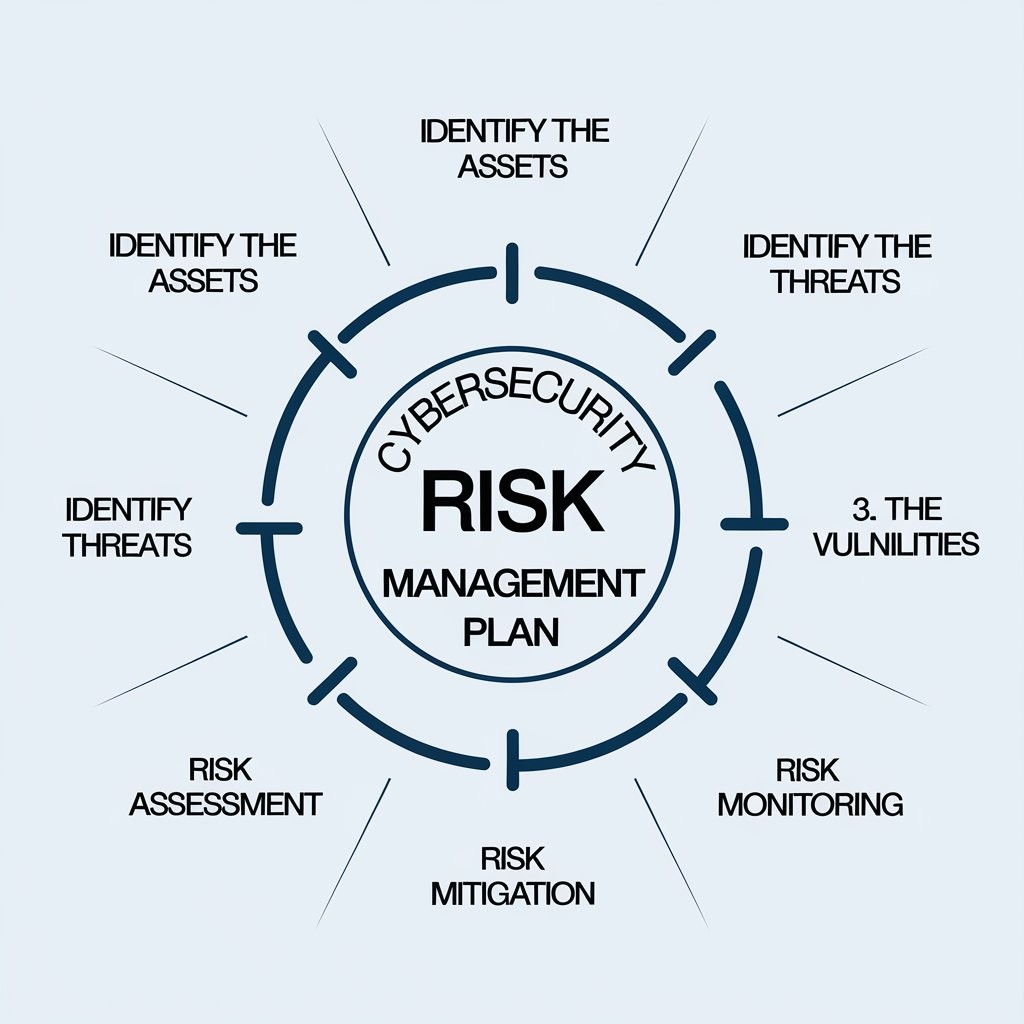UA
7 Min Read
1. Define the Scope and Objectives
Why it’s important: Establishing the scope of your risk management plan ensures clarity on what assets, data, and processes will be protected and what the goals of the plan are.
Steps:
Identify critical assets: Start by listing all critical IT assets (e.g., networks, hardware, software, databases, intellectual property).
Determine priorities: Classify your assets based on their importance and sensitivity to your business operations.
Set goals: Define your cybersecurity objectives, such as preventing data breaches, ensuring compliance with regulations, or minimizing downtime during a cyberattack.
2. Identify and Assess Potential Cybersecurity Risks
Why it’s important: Understanding what threats could affect your organization is essential for assessing potential damage and deciding on preventive measures.
Steps:
Conduct a threat analysis: Identify internal and external threats (e.g., malware, phishing attacks, insider threats, natural disasters, etc.).
Analyze vulnerabilities: Identify the weaknesses in your organization’s current cybersecurity posture (e.g., outdated software, unsecured systems, weak passwords).
Assess impact and likelihood: Evaluate the potential impact of each threat and its likelihood of occurring. This can be done using qualitative or quantitative risk assessment methods.
Create a risk register: Document each identified risk in a risk register, categorizing it by type, likelihood, impact, and affected asset or process.
3. Develop Mitigation Strategies and Controls
Why it’s important: Once you’ve identified the risks, developing appropriate controls and strategies helps reduce the likelihood of incidents and minimize their potential impact.
Steps:
Risk avoidance: Implement measures to completely avoid certain risks (e.g., discontinuing risky operations or using more secure alternatives).
Risk reduction: Apply controls to reduce the likelihood or impact of risks (e.g., patch management, firewall implementation, employee training).
Risk transfer: Shift responsibility for some risks to third parties, such as purchasing cyber insurance or outsourcing cybersecurity tasks.
Risk acceptance: If a risk is low and its impact minimal, you may decide to accept the risk without action (but continue to monitor it).
Common mitigation strategies:
Implement firewalls and intrusion detection/prevention systems (IDS/IPS).
Conduct regular security patching and updates on software and hardware.
Implement multi-factor authentication (MFA) for critical systems.
Use encryption to protect sensitive data.
Develop an employee awareness program to prevent social engineering attacks.
4. Create an Incident Response Plan (IRP)
Why it’s important: In case of a cybersecurity incident, having a well-defined incident response plan ensures quick and effective action to mitigate damage.
Steps:
Define roles and responsibilities: Specify who will be responsible for managing, investigating, and resolving the incident (e.g., IT team, legal, PR).
Establish communication protocols: Define how information will be shared internally and externally (e.g., with customers, regulators, law enforcement).
Prepare recovery strategies: Create processes to restore normal business operations, including data backup and disaster recovery steps.
Develop a post-incident analysis: After the incident, perform a thorough review to identify what went wrong, what worked, and how to improve future responses.
5. Implement Monitoring and Detection Tools
Why it’s important: Continuous monitoring helps detect potential threats early, allowing for timely intervention before they can cause significant damage.
Steps:
Install intrusion detection systems (IDS): Set up tools to monitor network traffic for abnormal activity that may indicate a breach.
Use security information and event management (SIEM) tools: Collect, analyze, and respond to security-related data from across your IT infrastructure.
Perform regular vulnerability assessments: Continuously scan systems and networks for known vulnerabilities and apply patches when needed.
Conduct penetration testing: Regularly test your defenses by simulating real-world attacks to identify weaknesses.
6. Develop Cybersecurity Training and Awareness Programs
Why it’s important: Employees are often the first line of defense against cyber threats. Well-trained staff can help prevent incidents caused by human error, such as clicking on phishing links or mishandling sensitive information.
Steps:
Train employees regularly: Provide ongoing cybersecurity training to ensure employees are aware of the latest threats and best practices.
Educate on specific threats: Train staff on common attack types such as phishing, ransomware, and social engineering.
Promote good security hygiene: Encourage practices like using strong passwords, enabling MFA, and securely handling sensitive data.
7. Implement Backup and Recovery Procedures
Why it’s important: In case of a cyberattack or data loss, having reliable backup and recovery procedures ensures business continuity and minimizes downtime.
Steps:
Regularly back up data: Implement automated and secure backup solutions for critical business data.
Test recovery plans: Regularly test the data recovery process to ensure that backups can be restored quickly if necessary.
Store backups securely: Keep backups encrypted and stored in separate locations (e.g., off-site or in a cloud service).
8. Review and Update the Plan Regularly
Why it’s important: Cybersecurity threats and organizational requirements evolve over time. Regular reviews ensure your risk management plan remains effective and aligned with current needs.
Steps:
Conduct regular risk assessments: Reassess risks regularly, particularly after a significant change in your organization or the threat landscape.
Update mitigation measures: As new threats emerge, update your cybersecurity policies, practices, and technologies to address them.
Engage in continuous improvement: Use lessons learned from previous incidents, training, and audits to improve your plan.
9. Measure and Report Effectiveness
Why it’s important: Tracking the effectiveness of your cybersecurity risk management plan helps identify areas of improvement and ensures the plan is achieving its objectives.
Steps:
Use key performance indicators (KPIs): Measure aspects such as incident response time, the number of successful attacks prevented, or system downtime due to cyberattacks.
Generate reports: Regularly generate reports on your cybersecurity status, incidents, and improvements to keep stakeholders informed.
Conduct audits: Perform periodic audits to assess the overall effectiveness of your risk management plan. audit3aa
Join our newsletter list
Sign up to get the most recent blog articles in your email every week.
You can copy our materials only after making sure that your services are safe.
This site is protected by reCAPTCHA and the Google Privacy Policy and Terms of Service apply.










